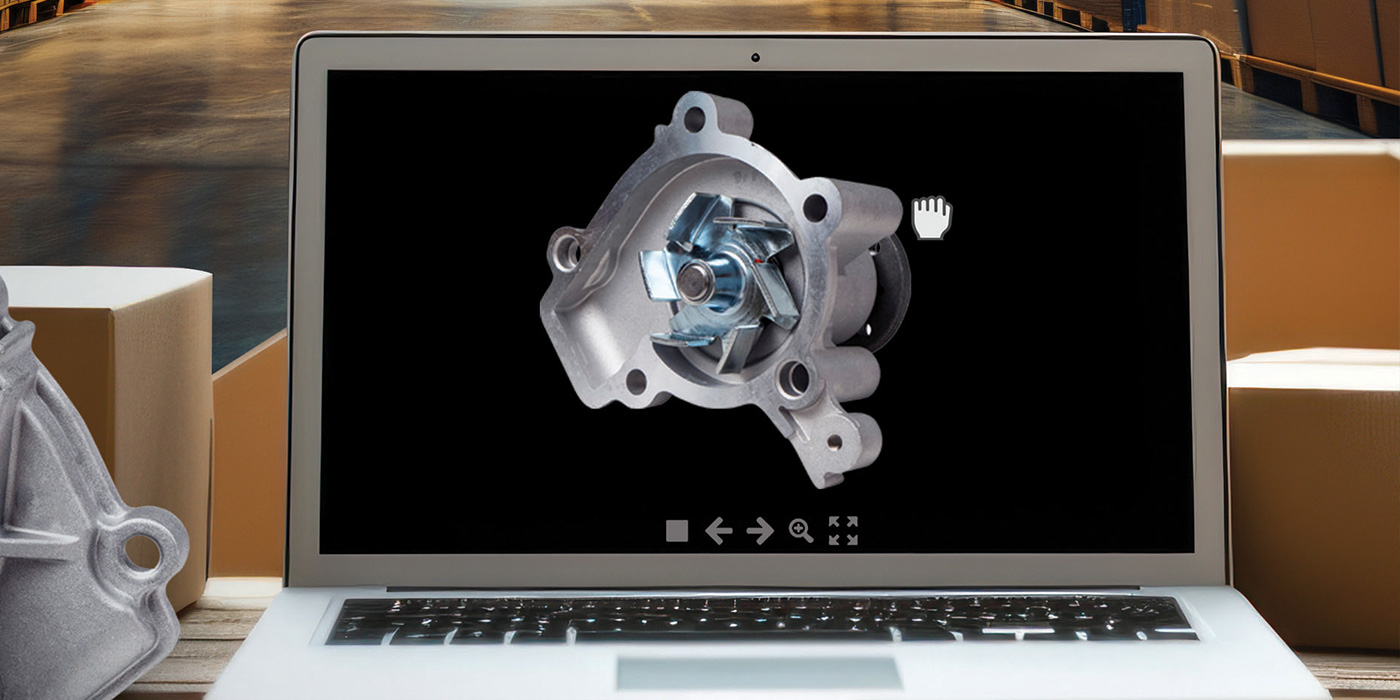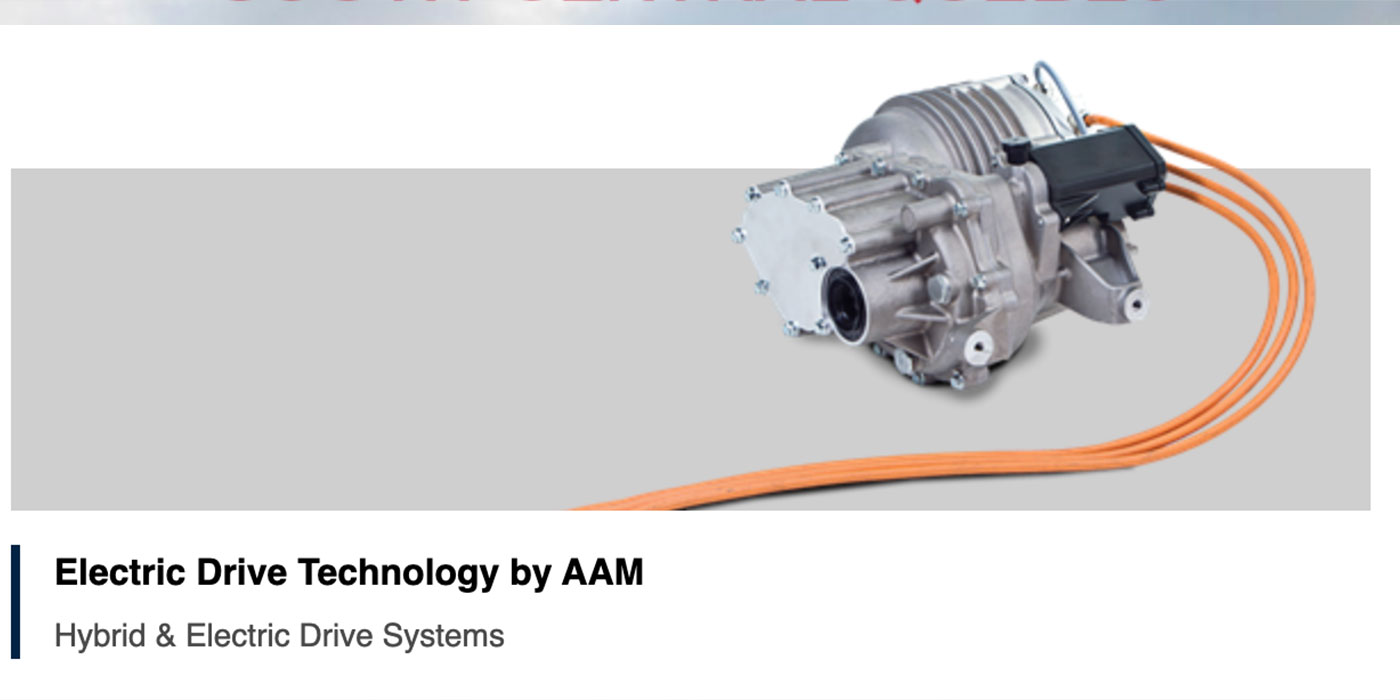By Brian Cruickshank, AAP
In today’s connected, electronic age, few store managers would consider going back to the “good old days” — those times not so long past when inventories were manually recorded and managed on cards.
These days, the very idea of inventory cards seems like the Stone Age, and in many ways, it was. Today, the entire supply chain — from manufacturer to warehouse to store to installer — is interconnected through sophisticated store management software packages and systems that provide business information and controls that were not possible even two years ago.
That’s important because today’s distributor exists in a world of perpetual change, with more challenging circumstances that make running a WD or store (or both) more difficult with each passing year. It’s an environment that demands high-tech solutions to some highly complicated business, logistical and competitive circumstances.
“Traditional parts stores are beginning to realize that they’re competing with dealerships that have the technology in place to view schematics and images, for example,” said Activant Sales Engineer Tom Webb. “We have to enable our customers to compete with that. Parts stores are also competing with retailers. Retailers won’t hesitate putting in a new retail counter station with bar code scanning, credit/debit card authorization and other features. Stores are realizing that they have to stay ahead of the technology curve or they’ll get crushed. The early adopters are doing that, but then again, there are still stores out there running (obsolete systems).”
According to Floyd Beadle, DST’s vice president of business solutions, advancements in technology continue to drive down hardware and software acquisition costs, reducing or eliminating the price/entry barriers for even smaller store or jobber companies.
“New business models, such as our DSTZ, are emerging to meet the needs of smaller parts distribution operations desiring all the functionality of an in-house business management system without the capital investment and potential expense liability required.”
Ultimately, says Webb, the drivers of technology will be the pressure that bears on distributors from both customers and competitors. Take inventory pressures for example. The effective managing of SKUs is a primary key to distributor success. But it’s among the most difficult of challenges with which they grapple. Part of the problem is that inventory is a moving target, with movement codes, vehicle demographics, new models — even new vehicle manufacturers — in perpetual change, making the job of keeping up with inventory an increasingly difficult task. Technology helps every level of the aftermarket better manage inventory, making it as efficient as possible.
CONNECTIVITY
While the basics of store management systems have not changed all that much — lost sales reports are still just lost sales reports — the real change has happened in the area of connectivity through the Internet. The integration of the Internet into store management systems has fundamentally changed the way counter professionals and customers access information, manage inventories, service customers, run their businesses and order parts. It allows each level of the supply chain — shops, stores, WDs and manufacturers — to interact and share data. It allows users to access software tools that were just too large and complex to be hosted on a simple store desktop. It also provides efficiencies for the entire supply chain.
“Branch store locations will sometimes place an order and have the manufacturer drop ship the order directly to the store,” said Webb. “We’re adding software into Eagle (Activant’s new business management system) that will allow the store to place an order up to its WD and the order will be automatically converted to an EDI order, passed through to the manufacturer and drop shipped back to the store.”
Webb mentions other connectivity efficiencies, such as the ability to integrate into group “data warehouses,” which collect group sales data for better and smarter stocking and selling strategies or the seamless integration of other data mining programs at the warehouse and manufacturer level.
Of course the challenge for connectivity has historically been speed and bandwidth.
“Today, the Internet is ubiquitous. It’s fast and it’s relatively inexpensive,” said WHI Solutions (Wrenchead) President Bryan Murphy. Murphy said that this broad access has allowed the Internet to provide “Software On Demand,” meaning that stores can access huge amounts of data that they could never have kept on their store desktops. Wrenchead, for example, can offer sophisticated products and services to its customers right over the Internet, and at a reasonable cost since there’s no software distribution expenses.
Murphy estimates that it has only been about 18 months since broadband Internet usage has gotten widespread enough that Software On Demand could become an industry-wide solution to store management.
“(The Internet) is the most cost-effective and efficient way to distribute software,” said Murphy. “We host everything here; there’s one set of databases, one set of routers and one team that administers everything. This gives us huge economies of scale.”
As far back as a decade, there were ways service dealers could dial into a jobber and look up a part, get an acquisition cost and some other information. The problem was that these connections were cumbersome and it was merely a one-to-one connection. That’s all changed. New management systems with integrated Internet connections allow service dealers to look at things like virtual inventories, right through the desktop. The same part searches are possible at the store level as well. The Internet’s open architecture allows for seamless exchange of information among all levels of the supply chain.
But what happens if the Internet connection is lost? Webb says that even though some software is accessed over the Internet, stores are still able to run their businesses off-line. In the event that an Internet connection goes down, stores can continue to run their businesses because access to cataloging and other essential business-management tools are still available on the desktop.
A MOVING TARGET: INVENTORY
Just imagine a shelf in a typical warehouse a quarter century ago. Back then, a single or perhaps a few part numbers satisfied a sizeable chunk of the vehicle population. These days, it’s a different story. No longer can a few part numbers provide adequate coverage. More vehicle manufacturers, more models on dissimilar platforms, mid-year model changes, longer-lasting vehicles and broader brand coverage mean far more SKUs are required to cover just the ‘A’ numbers. And then there’s the good, better, best model that most distributors use, tripling an already sky-high number of parts. What this all adds up to is a glut of parts that no distributor can handle perfectly. This forces each distributor to continually wrangle with coverage to determine which parts will be carried where. This, of course, requires state-of-the-art inventory controls.
Data is what allows inventory to be managed appropriately. Knowing the market and customers lets distributors better understand their inventories. The Internet has allowed distributors to access powerful management tools that assist in the management of inventory, among a host of other things. Wrenchead, for example, offers “market intelligence” through the Internet that essentially shows inventory information like movement codes, lost sales reports, pricing — all in a graphical format.
“We also link trading partners together so inventory can flow to its most efficient point,” said Murphy. This, he says, helps minimize inventory levels and maximize fill rates, a goal every distributor tries to achieve. As Activant’s Webb mentioned, integration with data warehouses is another example of how these systems are providing a clearer inventory picture for every level of the market.
Distributors do a reasonably good job tailoring their inventories to a given area’s vehicle mix, but in the end, there are just some parts they don’t have on-hand. In those instances, technology can make them available to your store, even when you don’t physically have them. This is where ‘virtual inventories’ are a valuable addition to store management software.
Virtual inventories are inventories in which customers can see not just what’s on the shelf, but what’s in the entire system — all in real time — from all possible sources. Parts stores and WDs can be connected electronically to many suppliers that have the needed part. Once connected, parts pros make one inquiry, rather than making multiple calls to find a customer’s part. He can see all the parts available throughout the entire system, improving efficiency, productivity and profitability. And since you’re far more likely to find what your customer needs, it’s also a customer service tool.
At the same time, repair shops can view what a jobber has, along with pricing, and look up the parts and have them delivered, all without having to pick up the telephone.
“Every time a customer accesses your Internet portal or gateway, it’s an opportunity to sell him something else,” said DST’s Beadle. He says it’s a ‘Do-you-want-fries-with-that?’ sort of revenue generation concept, empowering the ability to utilize on-line business communication as a cost-cutting selling device, as well as an ordering tool.
“Deployment of a more advanced system redefines the transactional experience for a distribution business regardless of scale,” said Beadle. “A parts business can now advertise and sell non-stocked inventory with the click of the customer’s mouse.”
Internet parts order may make sense in theory, but getting repair shops to use these tools has been an uphill battle until recently. Three and a half years ago, Jim Franco, president of Autologue, was frustrated. He knew that repair shops should be buying auto parts from their local jobbers over the Internet, but for some reason, they just weren’t biting.
“The aftermarket is slow to adapt,” concedes Franco.
Added Webb, “It’s a challenge, but then again, getting the industry to adopt new technologies has always been a challenge. In 1984, for example, Triad (now known as Activant) introduced the electronic catalog and there was some resistance to even that technology. It took a few years, and now you can’t run your business without it.”
Webb believes there are two reasons for this: fear of technology and fear of investment. Franco and Webb agree that fortunately the industry is getting smarter and more willing to adapt to newer technologies like Internet parts ordering. As with most changes, the thing that forced it was a simple one: It makes financial sense.
Beadle cites PA Distributors as a real-world example. For the Maryland ACDelco and Motorcraft WD, Internet parts ordering increased sales revenue by 10 percent by providing the ability to promote Internet specials. Additionally, on-line orders have dramatically increased average dollars per order — in some months by more than 100 percent. The WD’s general manager, Brad Whitener, has noticed that customers, who would not have normally purchased anything more than their standard orders, are now placing additional orders for these specials. He credits the power of on-line advertising on the site to those sales. For him, it’s an additional competitive weapon in PA Distributors’ arsenal. He says new customers, accounting for about 5 percent of the total number of customers, have recognized the value of the time savings provided by Internet-based ordering.
Franco says this technology not only increases sales dollars, but also provides a savings in “efficiency dollars,” rather than an improvement in gross profit. Since customers are doing the parts look ups, parts professionals are freed up to the real skilled work at the counter, things like tracking down hard-to-find parts. Franco says that offering parts ordering over the Internet allows a store to do 20 to 30 percent more business without affecting overhead.
“(PA Distributors’ customers) now place 90 percent of their orders over the Internet, virtually eliminating the need for paper order faxes or telephone calls,” said Beadle. “As a result of that reduction in internal headcount, PA Distributors was able to financially justify the hiring of an additional outside sales person. So in a business management sense, an employee that was strictly business overhead was replaced by a more productive revenue generating employee.”
Franco warns, however, that there’s a certain level of danger associated with these virtual inventories. That danger, he says, lies in their ability, in certain circumstances, to erode margin because virtual inventories and Internet parts ordering can turn just about anyone into an auto parts distributor. Because they don’t have warehousing or distribution expenses, these ‘drop shippers’ can erode margin for traditional distributors.
“Distribution costs add another 17 percent to the cost of a part,” said Franco. “Some of these guys have no inventory. They’re taking orders and having someone else ship the part for them. Since there’s no handling charges like (there are) for a traditional distributor, they can undercut pricing. It’s very dangerous.”
Fortunately, the one thing the traditional aftermarket has going for it is customer expectations. Motorists don’t just expect their vehicles to be serviced in a single day — they demand it. As long as customer demands remain this high, these kinds of virtual inventory drop shippers will be mostly relegated to the world of the shadetree mechanic.
BEYOND PARTS
Connectivity allows the Internet to do what the Internet does best — act as a portal to information, wherever that information is best stored. That includes information like pricing, availability, shipping and any information a customer or supplier chooses to share. Think about all of the information stores need today — catalogs, pricing, part information, etc. This information is available right through business management systems as they seamlessly connect to customers, warehouses, manufacturers, TSB providers and others important to the vehicle repair process. It’s an integrated, connected and seamless solution to the age-old problem of information accessibility.
Franco explained that connectivity via the Internet allows companies like Autologue to apply existing technologies from other industries to the aftermarket.
Take on-line banking for example. Most people don’t get their cancelled checks anymore — they access them on-line. Franco says that document imaging, which essentially creates a paperless office in which customers and stores can manage and store invoices and statements, is a new way to connect customers to their distributors, allowing each to manage their businesses in new and more efficient ways.
“Customers can the see invoices, statements, the parts he bought — even the check he sent you — on the Internet.”
As the industry marches forward, more of these tools will become available in the market, each designed to increase profitability, efficiency and customer loyalty. These tools by themselves aren’t necessarily the entire answer to improving these issues. However, the intelligent application of these tools in the right environment will make business better for you and your customers.













